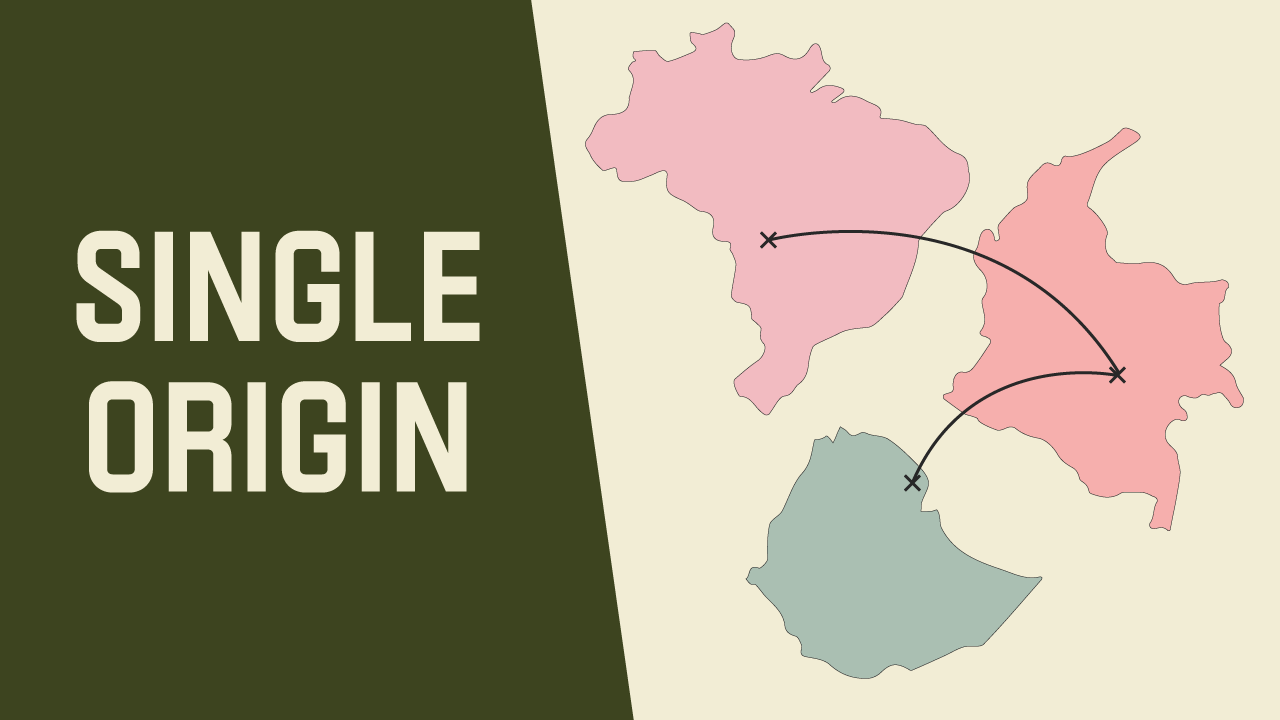coffee knowledge
Single-Origin Coffee: A Helpful Guide
When it comes to selecting coffee beans, knowing where they come from is a critical factor. This is because where the coffee is grown will shape the tasting notes unique to each harvest. The interest in single-origin coffee, at its core, is about better understanding the flavour profile and how that profile is affected by the growing climate. It’s about exploring new regions and producers to discover their qualities.
Defining Single-Origin
Single-origin coffee is beans that come from one source, whether that be a farm, crop, or region. This ensures that the beans we use are of good quality and from a trusted source. For us, and many other specialty roasters, using single-source coffee means that we know where our beans come from. It helps foster better relationships with our supply chain; from farm to cup. At a farm level, even within the same producer, lots are often mixed with different varieties to make a single batch.
The Basics of Blends
For any coffee fan, we know that not all beans are created equal. The region, climate, and even the harvesting process will shape the flavour profile. When we refer to a batch of beans as blended, what this means is that the different lots are blended during the roasting stage. The blending of varietals at the producing origin is a common practice and should not be confused with the practice of blending during the roasting stage.
This isn’t to say that blends are any less flavourful than single-origin, but rather that they tend to have a more balanced and approachable taste. Because these coffees comprise of multiple beans of different origins, they are often more consistent in taste. This is a result of being mixed and produced in larger batches. Whereas, a single-origin coffee will have a more distinct flavour, unique to its growing environment.
Three Differentiating Factors
When it comes to single-origin vs. blends, there are three main points of differentiation.
- The first is the flavour profile. A single-origin batch will largely have a more exotic or complex profile. Whereas, a coffee blend will a flavour that is more complimentary.
- Purity is another factor. It’s widely considered that single-origin beans will brew a clean and crisp cup. On the other hand, blends are better suited for milk-based beverages.
- And the last factor is consistency. Because no two harvests are exactly the same, no two batches of single-origin coffee will be the same. The seasonal changes year to year will have a tremendous impact on the taste of the coffee.
Strengthening The Relationship
One unintended consequence of the burgeoning interest in single-origin beans is the increased quality of the coffee. The relationship between roasters and producers become tighter, as both parties rely on the other to learn and shape what’s to come. Roasters can inform on market trends, while producers get a deeper understanding of the impact of their farming and processing on the beans.
The diversity and individuality of single-origin beans are what draws us into the coffee world. It’s about discovering the unique characteristics of beans from far-flung regions and how that translates into a freshly brewed cup.
